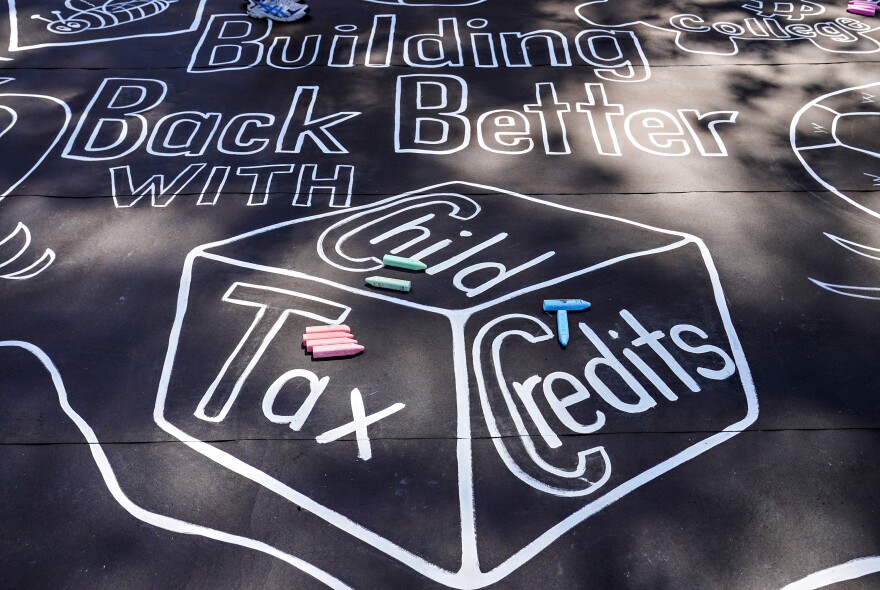Katie Garrigus didn’t know about the Biden administration’s expanded child tax credit until this week. She got a letter in the mail explaining the program. Then when the Wolcott resident woke up on July 15, “I looked in my bank account this morning, [and] it just appeared there.”
On Thursday, eligible parents started receiving monthly payments from the credit. That money is an advance of the child tax credit they might normally receive in a tax refund. The expanded credit was written into the American Rescue Plan -- it is temporary and available to parents only through the end of 2021.
The IRS estimates that 39 million households are eligible, and most of them got their initial payments Thursday. Families who filed 2020 taxes would have been automatically enrolled and should have received the benefit through direct deposit or check.
READ MORE: NPR: The Expanded Child Tax Credit Is Here. Here's What You Need To Know
Parents like Garrigus will get six of these payments this year. The amount depends on the number of kids, their age and the family income level. At most, it’s $300 per child for kids under 6 years and $250 for those ages 6 to 17. It’s phased out for higher earners.
Three major things changed: It’s a bigger credit, it will come in monthly installments, and it’s now available to the lowest-income American parents.
Garrigus pointed out that she has received the regular child tax credit all along. “I mean, I’m kind of torn, there’s a lot of families that really, really need it and maybe could have gotten more,” she said. Families with no or little income don’t typically get the child tax credit because they don’t owe income tax.
And she’s right, a lot of families need it. The IRS expects the credit to lift 5 million children out of poverty -- that would mean cutting child poverty in half.
U.S. Rep. John Larson is working with Catholic Charities to raise awareness of the credit, particularly among parents who are newly eligible. “If they don’t file [taxes] with the IRS on a regular basis and didn’t receive the check, we want to make sure that they do,” he said.
Larson emphasized that the difference with this credit is that rather than getting it after filing taxes in April 2021, families can get that money earlier.
But it’s the eligibility for the lowest-income parents that will make the most difference. Typically the child tax credit could be used only if a parent or guardian owed taxes. For those who had no or too little income to pay taxes, they couldn’t benefit.
Overall, 88% of the nation’s children will benefit. Single parents who make under $75,000 or joint filers who make under $150,000 will get the full credit. Families making more are eligible for a phased-out credit: The eligibility ends for single parents who make more than $200,000 per year or married parents who make $400,000 or more a year.
This program is funded by the American Rescue Plan, so it’s set to run out by the end of the year. Congresswoman Rosa DeLauro says she has been working to expand the credit for two decades. She hopes now to make it permanent along with Senate Democrats, who just announced a budget deal Wednesday. The Biden administration hopes to keep the program around until 2025.
For Garrigus, the money will make things a little easier right now. Her kids are in summer camp, and she says, “Perhaps now since that money’s there [now], they can go for a few more weeks since they really enjoy it.” She thinks maybe she and her husband will go out to eat or she’ll spring for a pedicure. But either way, it’s cash to stimulate the economy in her neighborhood, and $15 billion across the country now in the bank accounts of parents and guardians.


